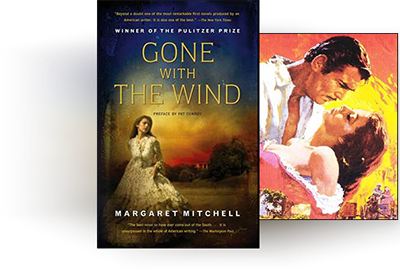
I knew from the very first moment when I made the decision to finally write my first novel, it would be a historical fiction. My first real novel I read was Gone with the Wind; I was eleven years old. The small library at my school had only children’s books, and I had already read most of those, at least those worth reading, so I went to my hometown’s public library. I walked up and down the aisles, loving the smell of an old library. Something made me stop, and there it was, looming over my head, a really large book, with its cover already looking beaten and worn from being in too many hands. I had to stand on my tiptoes to reach it, and once it was in my hands, I knew I had found a treasure.
At the checkout desk, the librarian looked at me over the top of her glasses and declared, “This is an adult novel. Children your age shouldn’t be reading this. I’ll have to call your mother.”
I was a very rambunctious child, so my mother was thrilled that I had finally found something quiet to do; she quickly assured the librarian that it was fine with her if I wanted to read the book.
When I started to leave with book in hand, the librarian called out to me, “You know, it took Margaret Mitchell ten years to write that novel. It’s more than just a story, it’s a history lesson.”
I turned around and smiled. “I like history.”
The dye was cast; I was destined to write historical fiction. Margaret Mitchell became nothing less than a superhero to me. Now, I know why it took her a decade to write her masterpiece, and on my bad writing days, why it was the only novel she ever wrote.

Writing is Hard Work
Writing is hard work; it’s not for the faint of heart. Writing historical fiction is even harder, as it is more than just crafting an intriguing plotline. There’s the laborious task of researching the history that drives the story. Any authentic historical reference that I used in the book, I researched at least three times. If I could not validate something I had written in the book with three different sources, I would continue looking until I could, or I found alternatives to what I had written. This is hard; after all, I was trying to get this book published.
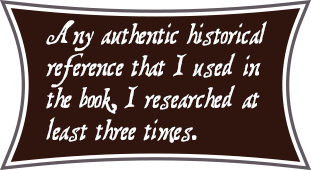 Time spent researching takes pure resolve. You can do anything you wish with the plotline and fictitious characters of your historical fiction, but you must make sure that the actual people and history that surround it are correct. I actually spent much more time validating the true history of the book than crafting my plotline or developing my characters. The operative word here is patience. I’m a Leo. Patience has never been one of my virtues, but I had to make it one.
Time spent researching takes pure resolve. You can do anything you wish with the plotline and fictitious characters of your historical fiction, but you must make sure that the actual people and history that surround it are correct. I actually spent much more time validating the true history of the book than crafting my plotline or developing my characters. The operative word here is patience. I’m a Leo. Patience has never been one of my virtues, but I had to make it one.
Once you have this impeccably correct authentic history, it has to be utilized in a clever way. It can’t be something that the reader of your historical fiction has to stumble or claw through. It should be something readers actually enjoy, even if they aren’t lovers of history. One of the reviews of my book actually stated that the history that intertwined within the plotline made the fiction portion of the book much more realistic. How did I do that? The first and perhaps hardest challenge was deciding what historical events to use. They can’t be scattered willy-nilly, and they must enhance the story. This is where chapter organization becomes crucial.

Organize Chronologically
Historical fiction works best when the chapters are organized chronologically. I used chapter number, year, and at times, season of the year. Because my characters existed in more than a few settings, I named locations. I wrote the first draft of the fiction portion of the chapter first, and then researched to find historical events that fit in some meaningful way with the events of the chapter. Some chapters had several; some had none. I tried very hard not to force something into the book. It had to fit.
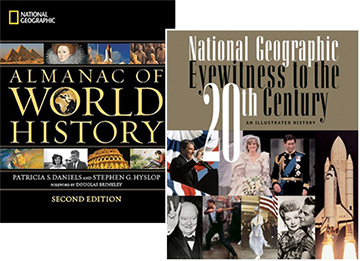 There are some very good printed resources such as the National Geographic Almanacs of World History and their single volume of Eyewitness to the 20th Century, to name a couple, that gave me a quick look at what was happening in the state of Texas, national, and world scene at any particular time. If something caught my fancy and would enhance my chapter, I went on the broader stage and researched it further.
There are some very good printed resources such as the National Geographic Almanacs of World History and their single volume of Eyewitness to the 20th Century, to name a couple, that gave me a quick look at what was happening in the state of Texas, national, and world scene at any particular time. If something caught my fancy and would enhance my chapter, I went on the broader stage and researched it further.
Today’s writers are so fortunate that technology enables us to research so easily. Remember, you need multiple resources to make sure that what you are reading and ultimately may use in your novel is authentic. Readers of historical fiction are usually people that love history, and if your history isn’t correct, you more than not will get caught. Of course, always maintain a running bibliography of your research sources.

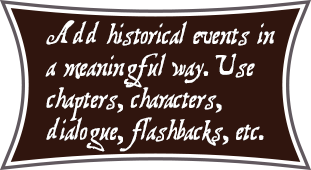
Insert Historical Treasures in a Meaningful Way
Next, you must insert these historical treasures into your novel in a meaningful way. Some events I inserted as dialogue between characters. I know; I know. The trend today is to keep dialogue short and sweet, but for some of us that were communicating long before the tweet, we actually used full sentences, even complex compound sentences, in our conversations, and we had lengthy conversations about what was happening in the world around us. The characters in my novel, Strongest Bonds, Broken Fences, do just that; they discuss things.
Other historical events, I placed at the very beginning of the chapter, and then centered that chapter and even following chapters around this major event. I used flashbacks to infuse more historical events if flashbacks worked well. Of course, as I have said previously, not all chapters contained historical events. Too many are like too much salt or pepper on food; I didn’t want my plotline to get lost in them. I wanted it to maintain its flavor.

What About Your Characters?
My novel contains many characters, has 545 pages housed in a six by nine inch cover, spanning over (including flashbacks) 43 years. It’s hard to keep up with all the characters, not so much what they are doing as what they have done.
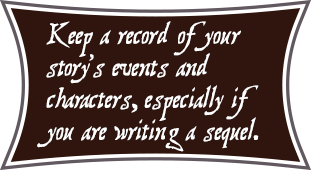 If you have plans to write a sequel, you also have to keep track of their ages. I have kept a chart on all my characters with names, a few anecdotal notes and ages for each year of the 43 year span, and where they are at any given time. I was at a very critical and emotional point in my plotline, and I needed a certain character, Ramon, to come to my main protagonist’s aid.
If you have plans to write a sequel, you also have to keep track of their ages. I have kept a chart on all my characters with names, a few anecdotal notes and ages for each year of the 43 year span, and where they are at any given time. I was at a very critical and emotional point in my plotline, and I needed a certain character, Ramon, to come to my main protagonist’s aid.
I do most of my writing very early in the morning; rational people would say that I get up in the middle of the night, but I digress. I suddenly realized that I had lost Ramon somewhere in the pages. I gasped, “Oh my God! I’ve lost Ramon. Where did I leave him last?” Luckily my chart saved the day, and probably the night’s sleep for everyone in the house.
Records are important. I also took the time to write short chapter summaries. Both the chart and the summaries help to avoid inconsistencies within the novel, especially if you are planning to write a sequel.

Why You Should Try Writing Historical Fiction
By now, some of you may be wondering, why bother with this taxing genre. Most authors who’ve written successful historical fictions are dead, and there are very few authors willing to take their places. Take out all the time for researching historical facts, and I could write and publish three times the number of fiction novels. But, there it is, the golden egg of writing!
 Take time and look at how many other genres are out there and the multitude of authors that are writing them. There is a lot of competition out there writing sci-fi, paranormal yarns, romance, tragedy, and mystery thrillers, etc.
Take time and look at how many other genres are out there and the multitude of authors that are writing them. There is a lot of competition out there writing sci-fi, paranormal yarns, romance, tragedy, and mystery thrillers, etc.
Historical fiction has a niche, and a huge potential market. Very few people are writing them, and the age group that longs for them is huge, the baby-boomers and their parents, the world’s greatest generation. Most of these readers spend the bucks buying the physical book.
My paperback version is outselling my Kindle version almost five to one. I facilitated this by making sure I published in a clear and larger font (Verdana 10 pt.), and I have actually had readers come up and thank me for the font, even younger readers who prefer holding an actual book in their hands rather than a reading device, which most also have.

Conclusion
Just because it’s a historical fiction doesn’t mean it can’t have romance, tragedy, murder, intrigue, a touch of the paranormal, and a disgusting, evil, and sadistic antagonist that you will love to hate. Mine does.
 The most important thing is that it has history, some of it epic, some little tidbits that make great party conversation; some will make you laugh or make you cry, and some will have you saying, “Gosh, I didn’t know that.”
The most important thing is that it has history, some of it epic, some little tidbits that make great party conversation; some will make you laugh or make you cry, and some will have you saying, “Gosh, I didn’t know that.”
It’s fine to enjoy a book and learn something new at the same time. In my case, just like I said to the librarian, all those many years ago with a classic in my hand and a wide smile on my face, “I like history.”
About the author:
Having lived in Texas for over forty years, JoAnne Marich MacIntyre embraces the Texas Hill Country as the primary setting for her first novel, a historical fiction, Strongest Bonds, Broken Fences. Her employment background includes a successful business career with a prominent Houston corporation and twenty years of teaching. Ms. MacIntyre moved from Houston in 1995 to her acreage in the Texas Hill Country where she enjoys hiking, gardening, and writing. She currently is promoting her first novel and is busy writing its sequel, When the Sandman Calls All Aboard. She hopes to have this latest novel out in late 2014.
Also by JoAnne Marich MacIntyre:
1. How to Engage Your Readers with Extraordinary Characters (article)
2. The Magic of Powerful Story Settings (article)



